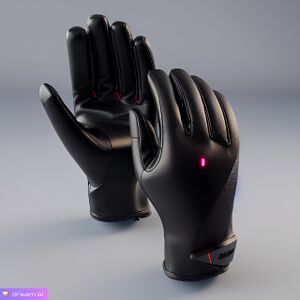


The Astro-Glide X3EVA Flight Suit, designed for Solas Tempus fighters and space craft, aims to enhance pilot survivability and combat effectiveness. Its sleek design incorporates the Adaptive Kinetic Mobility System (AKMS) with smart nanofibers for superior range of motion and flexibility. Advanced nano-insulation materials ensure thermal and radiation protection, while the Intelligent Connectivity and Vital Signs Monitoring (ICVSM) system maintains constant communication and real-time vital sign monitoring. The suit's limited rebreathing life support efficiently converts exhaled carbon dioxide into breathable oxygen, extending mission endurance. With unwavering commitment to pilot safety and performance, the Astro-Glide X3EVA empowers pilots to excel in the challenges of space exploration.
Capabilities
The combination of advanced technologies integrated into the Astro-Glide X3EVA Flight Suit significantly enhances pilot survival in the event of sudden exposure to hard vacuum. The Pressure and Vacuum Sealing with Nanomaterial Enclosure ensures a swift and airtight response to the vacuum of space, preventing immediate decompression and safeguarding the pilot from potentially fatal effects. The nanomaterials' capability to dynamically adjust permeability in the helmet and gloves creates an essential barrier against rapid pressure loss. Meanwhile, the Advanced Limited Rebreathing Life Support offers a vital advantage, allowing the pilot to sustain breathable air for up to 4 hours through efficient carbon dioxide reprocessing. In combination, these features protect against hypoxia and hypothermia, providing crucial time for rescue or maneuvering to a safer environment. Additionally, the Thermal and Radiation Protection defends against extreme temperature fluctuations and unshielded solar radiation, further mitigating risks associated with unexpected exposure to space's harsh elements. The Astro-Glide X3EVA Flight Suit stands as a reliable and life-saving asset in emergency situations, ensuring pilot survival during sudden hard vacuum exposure and extending the critical window for response and recovery.
- Adaptive Kinetic Mobility System (AKMS)
- The Astro-Glide X3EVA Flight Suit incorporates smart Nanomaterials and microactuators throughout its fabric, enabling the AKMS to responsively adapt to pilot movements and aircraft dynamics. By adjusting tension and compression points, the AKMS optimizes range of motion and flexibility, reducing muscle fatigue during high-G maneuvers, aerobatics, and intricate flight sequences. The AKMS seamlessly integrates with the spacecraft's fly-by-wire system, establishing a cohesive pilot-aircraft interface.
- Thermal and Radiation Protection
- Employing advanced multi-layered nano-insulation materials, the flight suit shields the pilot from extreme temperatures during high-speed and high-altitude flights. Its outermost layer exhibits exceptional resistance to solar radiation, safeguarding against unshielded exposure to harmful ultraviolet (UV), X-ray, and gamma-ray radiation encountered in space.
- Pressure and Vacuum Sealing with Nanomaterial Enclosure
- Through state-of-the-art nanomaterials, the flight suit's helmet and gloves form a dynamic environmental seal. Smart nanomaterial membranes within these components instantaneously adjust permeability in response to environmental conditions, maintaining controlled internal pressure during space missions. The nanomaterials enable airtight sealing against the vacuum of space when necessary, while affording increased breathability and mobility during in-cockpit operations or low-risk environments.
- Advanced Limited Rebreathing Life Support
- Equipped with cutting-edge nanomaterials, the flight suit's helmet and system manage heat and pressure, ensuring a comfortable internal environment during space missions. Notably, the nanomaterials enable limited rebreathing, efficiently reprocessing and converting exhaled carbon dioxide into breathable oxygen through a self-sustaining process. The innovative feature ensures up to 4 hours of continuous breathable air, providing supplemental life support for shorter missions or emergencies. However, it is imperative to acknowledge that the Astro-Glide X3EVA Flight Suit does not replace a full-fledged environmental suit and is designed for intermediate missions with controlled duration.
- Intelligent Connectivity and Vital Signs Monitoring (ICVSM)
- The Astro-Glide X3EVA Flight Suit features an advanced ICVSM system, seamlessly integrating communication technologies and vital sign sensors for comprehensive pilot monitoring. The system facilitates constant pilot-team connectivity, enables reception of critical mission updates, and effortless communication with ground control throughout the mission phases. Simultaneously, smart sensors within the suit continuously monitor vital signs such as heart rate and oxygen levels, ensuring pilot well-being and facilitating prompt medical attention if needed.
History
The Astro-Glide X1EVA Flight Suit, first developed in 2385, marked a significant milestone in spaceflight technology. Featuring the pioneering Adaptive Kinetic Mobility System (AKMS) and incorporating early-generation nanomaterials, it revolutionized pilot mobility and performance during space missions. However, one notable problem surfaced with the X1EVA over extended missions. Pilots reported discomfort and increased fatigue due to a lack of efficient temperature regulation within the suit. This limitation spurred the development of the X2EVA in 2386, aiming to address the thermal management issues.
The Astro-Glide X2EVA Flight Suit introduced enhanced thermal insulation properties, making use of advanced multi-layered nano-insulation materials. By doing so, it effectively shielded pilots from extreme temperature variations during high-speed and high-altitude flights. While the X2EVA provided a substantial improvement in thermal protection, it revealed a new challenge during prolonged missions. The incorporation of the advanced nanomaterials in the suit's design for thermal insulation led to some unintentional rigidity, restricting pilot movements during intricate flight sequences and dynamic maneuvers.
In response to this limitation, Solas Tempus embarked on a thorough research and development effort, culminating in the development of the Astro-Glide X3EVA Flight Suit in 2388. The X3EVA specialized model was designed explicitly for Solas Tempus, capitalizing on their proprietary Nanomaterial designs. The X3EVA's nanomaterials exhibited an unprecedented level of adaptability and responsiveness, overcoming the rigidity issues experienced with the X2EVA. The incorporation of these advanced nanofibers and microactuators into the suit's fabric facilitated seamless interaction with pilot movements and spacecraft dynamics through the upgraded Adaptive Kinetic Mobility System (AKMS).
With the X3EVA, pilots could now execute complex maneuvers and operate aircraft controls with unparalleled ease. Additionally, Solas Tempus introduced further refinements in the X3EVA's life support system, implementing the limited rebreathing capability to reprocess carbon dioxide into oxygen for up to 4 hours. This feature extended the suit's self-sustained life support capabilities, providing essential survival measures in the event of sudden exposure to hard vacuum.